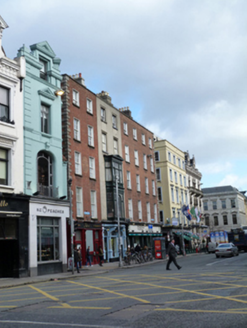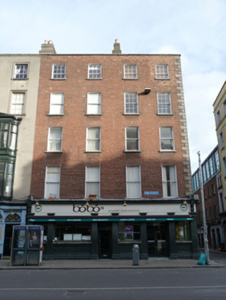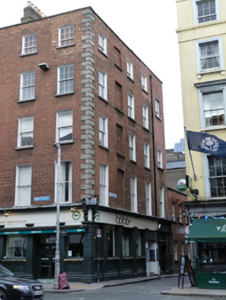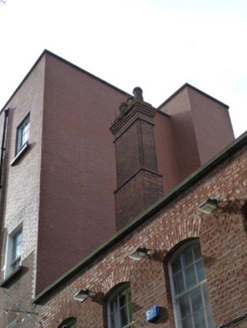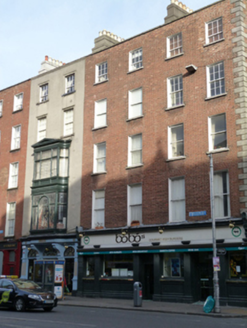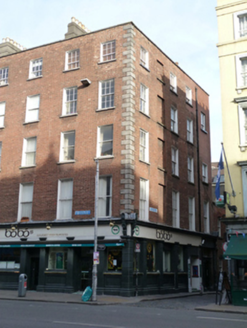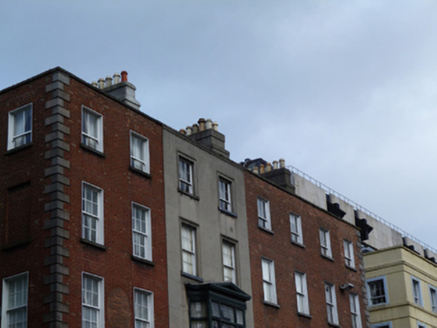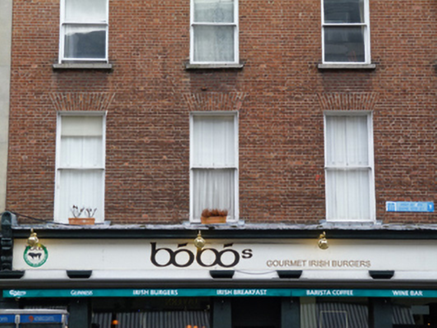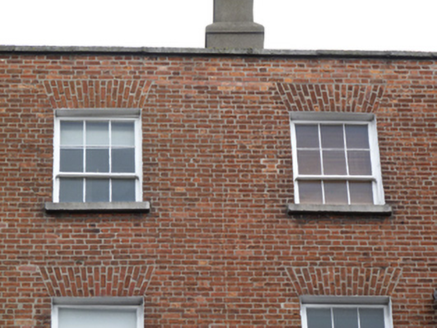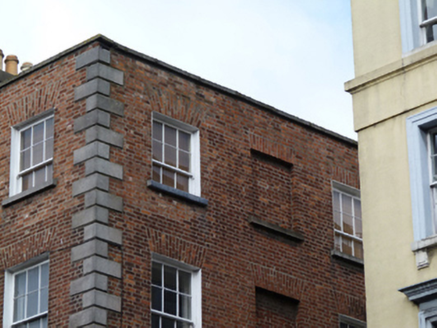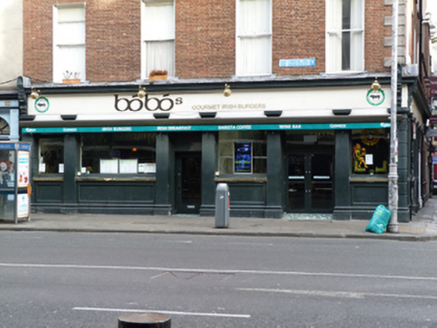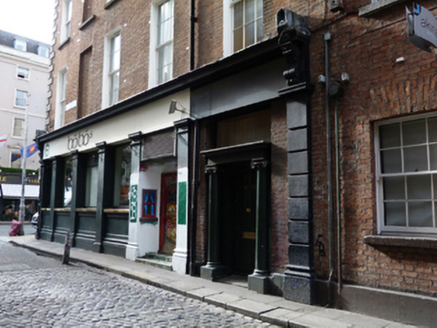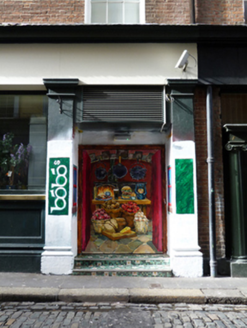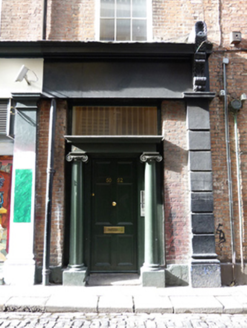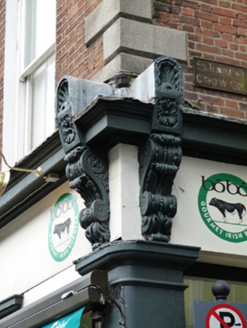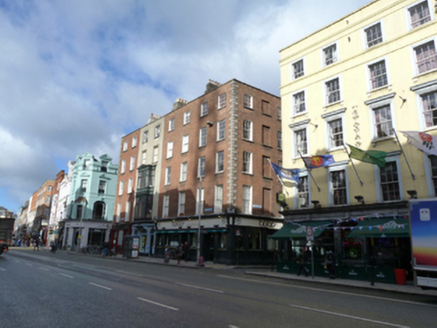Survey Data
Reg No
50020145
Rating
Regional
Categories of Special Interest
Archaeological, Architectural, Artistic, Historical, Social
Previous Name
Goodbody and Webb Stockbrokers
Original Use
House
In Use As
Apartment/flat (converted)
Date
1775 - 1795
Coordinates
315676, 234059
Date Recorded
24/02/2015
Date Updated
--/--/--
Description
Corner-sited terraced former pair of two-bay five-storey over basement former houses, built c.1785, having wraparound shopfront to front (south) and east elevations, with five-bay elevation to east. Now in single use as restaurant to ground floor. M-profile pitched roof, hipped to east, hidden behind partially rebuilt red brick parapet having granite coping, rendered chimneystacks with clay pots. Red brick, laid in Flemish bond, to walls, having granite quoins to east, rebuilt to rear (north) elevation. Square-headed window openings with rendered reveals, granite sills and six-over-six pane, six-over-three pane and one-over-one pane timber sliding sash windows. Blind square-headed window openings to east elevation. Square-headed door opening having Ionic columns supporting entablature and cornice, surrounding timber panelled door, overlight and granite step to east elevation. Masonry shopfront comprising plain and channelled pilasters supporting fascia and timber cornice, terminated by scrolled round-headed console brackets, surrounding square-headed display windows with brass-covered sills, panelled risers and moulded render plinth course. Located to north side of Dame Street at intersection with Crow Street.
Appraisal
These buildings are some of the finest examples of Wide Street Commission buildings remaining on the north side of Dame Street and form part of a relatively intact terrace located between Temple Lane South and Crow Street. Dame Street was one of the principal streets of the city by the eighteenth century, leading from the Parliament House (now Bank of Ireland) to the Castle. The street was widened and remodelled by Samuel Sproule and Charles Tarrant of the Wide Street Commissioners in the late eighteenth century. Individual landowners were responsible for constructing new houses, while the Commission financed the additions of cut stone embellishments including the granite quoins evident to the east end of this building. As commercial buildings and financial institutions were introduced to the street in the late nineteenth and early twentieth centuries many of the buildings were rebuilt or remodelled. Street Directories indicate this pair housed a number of stockbroking firms between 1894 and 1910. This well-proportioned pair shares a parapet height and fenestration pattern with its neighbours to the west, creating a strong sense of continuity and coherence. The retention of timber sliding sash windows and a well-executed Ionic doorcase contributes to the patina of age, while elegant scrolled consoles add decorative interest to the shopfront. Archaeological sources indicate a former burial ground to the rear of the building.
